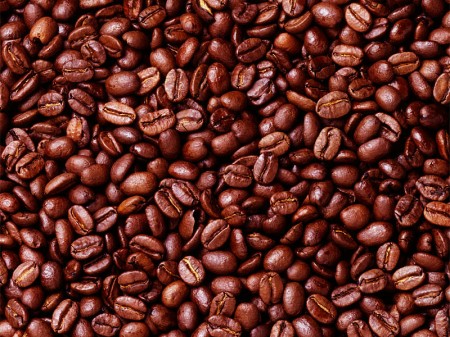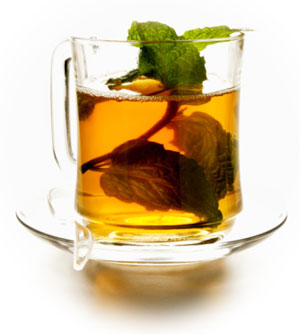In the Beginning:
Legend has it, coffee was discovered by an Ethiopian goat herder named Kaldi. One day, he noticed his goats frolicking around in an unusually spirited manner. He observed that they were also eating the berries of a nearby shrub.
Not being one to be left out of all the fun, he decided to try the berries himself. He was energized and pleased with the effects the cherries had on him. He told his friends and soon word spread throughout the region. The rest is history.
Coffee Timeline:
Here is an interesting timeline of the history of coffee from the UTNE READER, Nov/Dec 94, by Mark Schapiro, "Muddy Waters"
Prior to 1000 A.D.: Members of the Galla tribe in Ethiopia notice that they get an energy boost when they eat a certain berry, ground up and mixed with animal fat.
1000 A.D.: Arab traders bring coffee back to their homeland and cultivate the plant for the first time on plantations. They also began to boil the beans, creating a drink they call "qahwa" (literally, that which prevents sleep).
1453: Coffee is introduced to Constantinople by Ottoman Turks. The world's first coffee shop, Kiva Han, open there in 1475. Turkish law makes it legal for a woman to divorce her husband if he fail to provide her with her daily quota of coffee.
1511: Khair Beg, the corrupt governor of Mecca, tries to ban coffee for feat that its influence might foster opposition to his rule. The sultan sends word that coffee is sacred and has the governor executed.
1600: Coffee, introduced to the West by Italian traders, grabs attention in high places. In Italy, Pope Clement VIII is urged by his advisers to consider that favorite drink of the Ottoman Empire part of the infidel threat. However, he decides to "baptize" it instead, making it an acceptable Christian beverage.
1607: Captain John Smith helps to found the colony of Virginia at Jamestown. It's believed that he introduced coffee to North America.
1645: First coffeehouse opens in Italy.
1652: First coffeehouse opens in England. Coffee houses multiply and become such popular forums for learned and not so learned - discussion that they are dubbed "penny universities" (a penny being the price of a cup of coffee).
1668: Coffee replaces beer as New York's City's favorite breakfast drink.
1668: Edward Lloyd's coffeehouse opens in England and is frequented by merchants and maritime insurance agents. Eventually it becomes Lloyd's of London, the best-known insurance company in the world.
1672: First coffeehouse opens in Paris.
1675: The Turkish Army surrounds Vienna. Franz Georg Kolschitzky, a Viennese who had lived in Turkey, slips through the enemy lines to lead relief forces to the city. The fleeing Turks leave behind sacks of "dry black fodder" that Kolschitzky recognizes as coffee. He claims it as his reward and opens central Europe's first coffee house. He also establishes the habit of refining the brew by filtering out the grounds, sweetening it, and adding a dash of milk.
1690: With a coffee plant smuggled out of the Arab port of Mocha, the Dutch become the first to transport and cultivate coffee commercially, in Ceylon and in their East Indian colony - Java, source of the brew's nickname.
1713: The Dutch unwittingly provide Louis XIV of France with a coffee bush whose descendants will produce entire Western coffee industry when in 1723 French naval officer Gabriel Mathieu do Clieu steals a seedling and transports it to Martinique. Within 50 years and official survey records 19 million coffee trees on Martinique. Eventually, 90 percent of the world's coffee spreads from this plant.
1721: First coffee house opens in Berlin.
1727: The Brazilian coffee industry gets its start when Lieutenant colonel Francisco de Melo Palheta is sent by government to arbitrate a border dispute between the French and the Dutch colonies in Guiana. Not only does he settle the dispute, but also strikes up a secret liaison with the wife of French Guiana's governor. Although France guarded its New World coffee plantations to prevent cultivation from spreading, the lady said good-bye to Palheta with a bouquet in which she hid cuttings and fertile seeds of coffee.
1732: Johann Sevastian Bach composes his Kaffee-Kantate. Partly an ode to coffee and partly a stab at the movement in Germany to prevent women from drinking coffee (it was thought to make them sterile), the cantata includes the aria, "Ah! How sweet coffee taste! Lovelier than a thousand kisses, sweeter far than muscatel wine! I must have my coffee."
1773: The Boston Tea Party makes drinking coffee a patriotic duty in America.
1775: Prussia's Frederick the Great tries to block inports of green coffee, as Prussia's wealth is drained. Public outcry changes his mind.
1886: Former wholesale grocer Joel Cheek names his popular coffee blend "Maxwell House," after the hotel in Nashville, TN where it's served.
Early 1900's: In Germany, afternoon coffee becomes a standard occasion. The derogatory term "KaffeeKlatsch" is coined to describe women's gossip at these affairs. Since broadened to mean relaxed conversation in general.
1900: Hills Bros. begins packing roast coffee in vacuum tins, spelling the end of the ubiquitous local roasting shops and coffee mills.
1901: The first soluble "instant" coffee is invented by Japanese-American chemist Satori Kato of Chicago.
1903: German coffee importer Ludwig Roselius turn a batch of ruined coffee beans over to researchers, who perfect the process of removing caffeine from the beans without destroying the flavor. He markets it under the brand name "Sanka." Sanka is introduced to the United States in 1923.
1906: George Constant Washington, an English chemist living in Guatemala, notices a powdery condensation forming on the spout of his silver coffee carafe. After experimentation, he creates the firstmass-produced instant coffee (his brand is called Red E Coffee).
1920: Prohibition goes into effect in United States. Coffee sales boom.
1938: Having been asked by Brazil to help find a solution to their coffee surpluses, Nestle company invents freeze-dried coffee. Nestle develops Nescafe and introduces it in Switzerland.
1940: The US imports 70 percent of the world coffee crop.
1942: During W.W.II, American soldiers are issued instant Maxwell House coffee in their ration kits. Back home, widespread hoarding leads to coffee rationing.
1946: In Italy, Achilles Gaggia perfects his espresso machine. Cappuccino is named for the resemblance of its color to the robes of the monks of the Capuchin order.
1969: One week before Woodstock the Manson Family murders coffee heiress Abigail Folger as she visits with friend Sharon Tate in the home of filmmaker Roman Polanski.
1971: Starbucks opens its first store in Seattle's Pike Place public market, creating a frenzy over fresh-roasted whole bean coffee.










